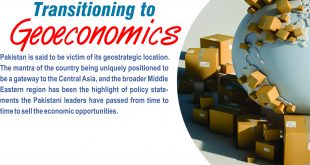An imperative to reducing tax evasion
To pay debt servicing charges of $7.479 billion (principal amount of debt $5.186 billion plus interest amount of $2.293 billion) for the fiscal year 2018, the government is in dire need of funds. Therefore, to meet its obligations and to finance budget of Rs 5,103.8 billion during 2018-19, the government will be searching new avenues for generating additional funds. The most important source of funds with the government is the tax revenue that is collected in the form of direct and indirect taxes. Among taxes, sales tax is the most important levy with the highest contribution of more than 43 percent in the overall federal tax receipts.
A standard sales tax regime with 100 percent collection efficiency follows the destination principle by imposing the same rate of tax on imports and local supplies of goods and services and zero rates on exports. However, many deviations from this standard in the form of multiple rates, reduced rates, exemptions, zero rates on domestic and imported goods, fixed tax, truncated tax and other concessionary schemes are part of the current sales tax regime. Such deviations from standard sales tax regime, which is operational in VAT mode, give rise to many problems.
The most important one is the loss of tax revenue. Loss of sales tax due to exemptions was Rs 281 billion in 2017-18, which was Rs 250 billion in 2016-17. The International Monetary Fund (IMF) estimated that cost of sales tax expenditure in Pakistan has increased from 0.1 percent of gross domestic product (GDP) in 2010-11 to 0.8 percent in 2015-16.
Other benchmarks used to assess the revenue performance of the sales tax regime, including the sales tax efficiency and the collection efficiency ratios, are also the lowest in the country due to the deviations from standard sales tax regime.
Recurring of sales tax frauds is another problem associated with the special scheme and concessionary sales tax regimes offered to certain persons or class of persons or sectors of economy. For example, in the wake of zero-rating scheme offered to five export-oriented sectors, including textile, carpet, leather, sports and surgical, way back in December 2011, which has been amended many times, many taxable persons have committed sales tax frauds by printing fake and flying invoices and by registering fake and dummy units primarily to facilitate genuine registered persons to adjust input tax on the strength of fake and flying invoices. Instead of pushing exports upward, exports decreased from $ 24,718 million in 2011-12 to $ 21,938 million in 2016-17. Moreover, the current account balance has worsened from $4,658 million in 2011-12 to $12,439 million in 2016-17. Curbing sales tax frauds requires additional efforts and resources that add to overall enforcement and administrative costs.
Read More: ANOTHER TAX AMNESTY
It is empirically quantified that concessionary regimes and special schemes reduce sales tax compliance and increase tax evasion. For example, multiple rates are associated with higher administrative and compliance costs, and hence, reduced sales tax efficiency. Moreover, zero rating of domestic supplies also increases costs of administration in processing sales tax refunds for hundreds – perhaps thousands – of non-exporters. Refunds of sales tax increased from Rs 32.4 billion (3 percent of total sales tax revenue) in 2013-14 to Rs 43.8 billion (4 percent of total sales tax revenue) in 2014-15.
Deviations from the standard sales tax regime also impose higher compliance costs on existing registered persons. In terms of hours per year, sales tax compliance cost in the country is relatively much higher than that in other countries of the region. For example, registered persons spent 514 hours making sales tax payments as compared to 122 hours and 162 hours in Nepal and Bangladesh, respectively. It is empirically found that in countries where tax compliance costs are higher, the registered persons prefer to operate businesses outside the formal economy. Similarly, rate differentiation also increases illegal input tax adjustments and inadmissible refunds.
Standardizing sales tax regime is imperative to reduce opportunities for sales tax evasion and avoidance and thus reducing costs on tax authorities to deploy additional resources for the detection and undertaking of criminal proceedings against such bogus registered units. An important feature of a standard sales tax regime is that it yields more tax revenue without compromising neutrality. However, it maintains neutrality only when its base is broad. The sales tax base in the country, on the other hand, is somewhat narrow. Just look at the evidence. Sales tax collection is concentrated in few commodities. The share of the major ten commodities, including petroleum products, electrical energy, cement, fertilizers, aerated water and beverages, cigarettes, natural gas, food products, sugar and services was 70 percent in the total net sales tax collection on domestic supplies during 2015-16. Similarly, 60 percent of sales tax revenue from imports is contributed by petroleum products, iron and steel, machinery and vehicles. It is clear that with the narrow base contributed by many exemptions and concessions, the sales tax regime lacks neutrality with uneven tax burdens on economic agents. To bring it close to a standard sales tax system and to make it practically efficient, the legislator needs to eliminate unnecessary exemptions, different rates (including zero rates on domestic supplies) and special schemes.
 Jahangir's World Times First Comprehensive Magazine for students/teachers of competitive exams and general readers as well.
Jahangir's World Times First Comprehensive Magazine for students/teachers of competitive exams and general readers as well.



